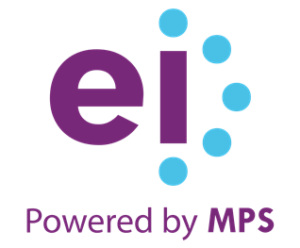Smarter Training For More Secure Skies
Security is the lifeline of aeronautics. Airlines and service providers today deal with a complex internet of regulatory, technological, and functional difficulties. Training is the cornerstone that keeps crews, travelers, and possessions safe, yet frequently it is fragmented, reactive, and inconsistent.
Recent occurrences, from heartbreaking collisions connected to fuel system errors to wheel detachments that compelled emergency touchdowns, and near-misses brought on by fire occasions and drone attacks, highlight the risks. Compliance alone is no more enough. The industry needs smarter, extra resilient discovering approaches.
Why Air Travel Demands A Smarter Understanding Strategy
Regulative Complexity
Air travel authorities continue to tighten up oversight. In the US, the FAA has been singing regarding exhaustion management and duty-hour restrictions. European regulatory authorities are concentrated on runway security and incident coverage criteria. Between East, regional centers are under raising pressure to maintain conformity across large, rapidly expanding fleets. Lining up training with these different demands is a significant difficulty.
Safety-Critical Accuracy
Fatigue-related mistakes, upkeep oversights, and runway attacks stay persistent threats. With the cost of mistake so high, training must go beyond expertise checks to scenario-based method that builds real-world readiness.
Technology Improvement
AI-enabled website traffic systems, electronic doubles, and advanced aircraft modern technologies are reshaping functions throughout flight and ground operations. Without dexterous upskilling, teams might discover themselves underprepared for the extremely systems they need to run safely.
Functional Performance Stress
Limited turnaround routines at active European centers or Center Eastern transit points leave little time for extensive training. Airlines need modular, workflow-friendly solutions that minimize downtime without compromising rigor.
Arising Danger Categories
From drone attacks in conflict-adjacent zones to cyberthreats targeting navigating systems, the aeronautics danger landscape is broadening. Educating methods should progress as quickly as these hazards.
Typical Training Demands In Aviation
Safety and security Training
Safety and security is the nonnegotiable foundation of aeronautics. Programs should cover both core and advanced practices, ranging from emergency situation procedures and emptying drills to situational understanding and incident reporting.
Regulatory And Compliance Training
Mandatory courses straightened with FAA, EASA, ICAO, and local authorities. These consist of recurrent training on duty-hour restrictions, devices checks, and taking care of unsafe products.
Maintenance And Design Educating
Hands-on simulations and refresher courses that assist designers and professionals determine component exhaustion, follow assessment protocols, and prevent oversights.
Protection And Airspace Safety And Security
With drone incursions and regional problems impacting worldwide airspace, specialized training is essential. Middle Eastern carriers, in particular, face expanding demands to attend to these dangers in fast-expanding operations.
Modern Technology And Systems Educating
Upskilling team on next-generation aircraft systems, AI-enabled web traffic tools, and digital systems that support effectiveness across United States and worldwide paths.
Soft Skills And Guest Experience
Cabin staff and ground personnel benefit from training in interaction, problem monitoring, and social sensitivity, guaranteeing passenger trust fund and solution consistency across worldwide hubs.
The Path Onward
In aviation, compliance is required, however building a society of safety and security and readiness is what truly sets resilient companies apart. By purchasing targeted, role-specific training that deals with safety, compliance, exhaustion, maintenance, innovation, and guest experience, leaders can make certain uniformity and confidence across their workforce.
Whether navigating governing needs in the United States, handling intricate hub procedures in Europe, or scaling fleets in the center East, the required is clear: training has to progress to match the rate of change overhead.
The question is no longer whether to modernize air travel training. It is exactly how rapidly leaders can act to secure both individuals and performance.
Read More:
FREQUENTLY ASKED QUESTION
Because aviation depends on stringent adherence to security methods, constant training, and error-free procedures. Without safety and security, the whole system is at threat.
Smarter strategies like flexible training, scenario-based discovering, and simulations make certain workers find out appropriate skills, use them in real-world contexts, and retain important safety expertise.
Technologies such as Digital Truth, AI-driven personalization, and mobile knowing provide immersive, flexible, and effective means to educate aeronautics specialists.
They line up training content with global air travel requirements and guidelines, making it simpler for organizations to guarantee conformity while likewise tracking and bookkeeping knowing outcomes.
Pilots, staff, maintenance personnel, air traffic controllers, and ground workers all gain from targeted, role-specific training that minimizes human mistake and improves safety.
The future factors towards continuous, technology-enabled discovering that adjusts to advancing guidelines, incorporates data-driven insights, and cultivates a culture of security across the sector.

EI
EI is an emotionally smart discovering experience layout business that companions with consumers in their Digital Change trip.
www.eidesign.net